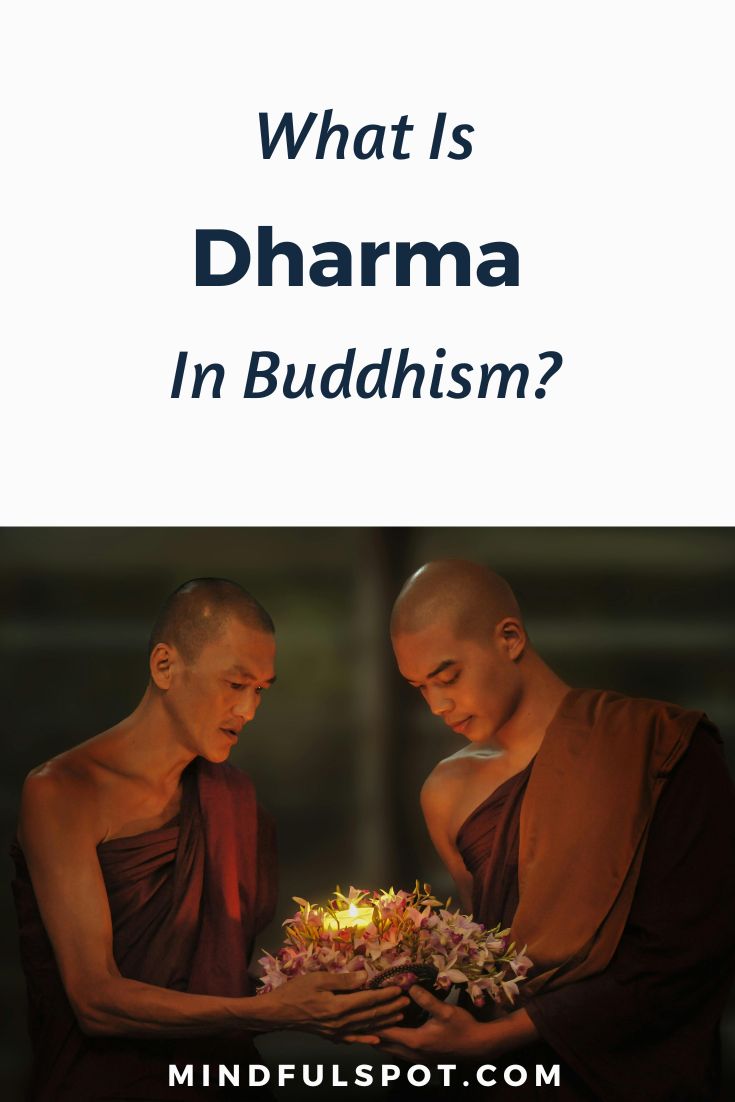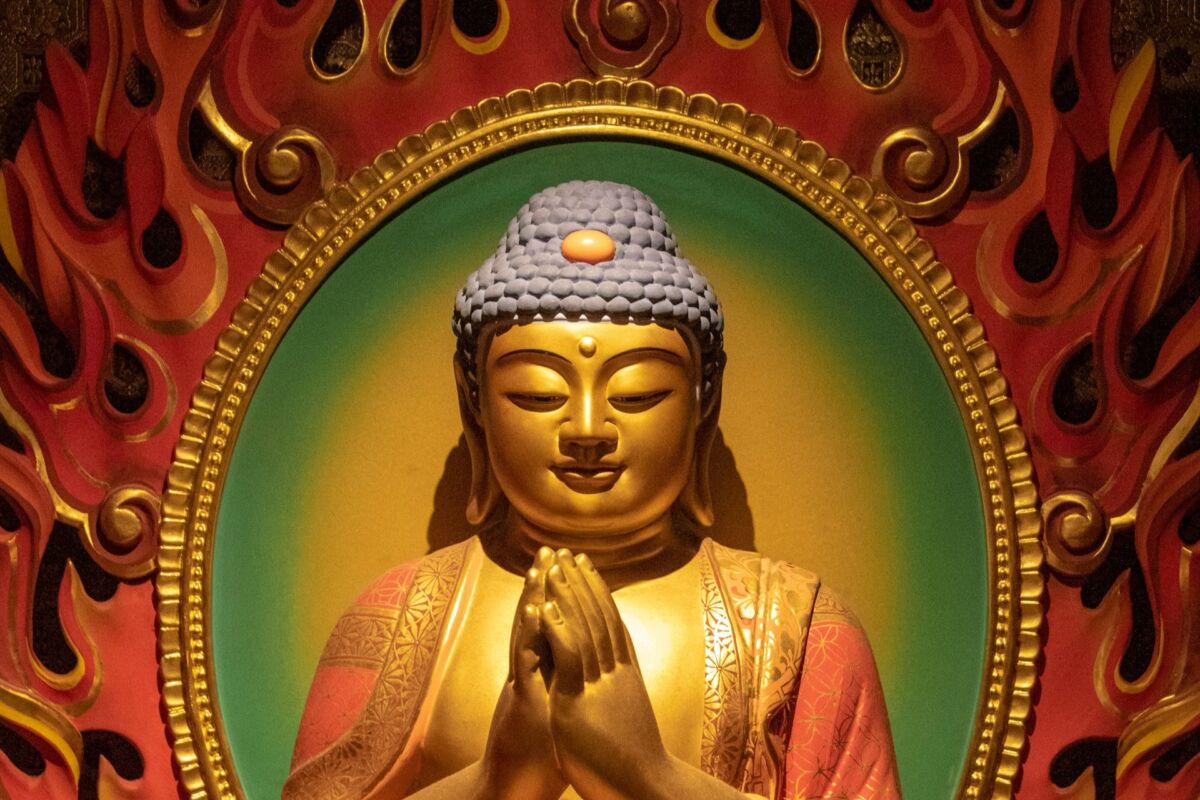Dharma is one of the key concepts in Buddhist philosophy.
Scholar-monk Bhikkhu Bodhi once wrote that “Dhamma is reflected in the human mind as the aspiration for truth, spiritual beauty, and goodness.” Then he added, “It is expressed in human conduct as wholesome bodily, verbal, and mental action.”
But what is the definition of Dharma? I’ve come across several explanations of this term while reading Buddhist literature and would like to share this one from the book titled Middle Length Discourses of the Buddha:
The Buddha’s teaching is called the Dhamma, a word that can signify both the truth transmitted by the teaching and the conceptual-verbal medium by which that truth is expressed in order that it can be communicated and made comprehensible. The Dhamma is not a body of immutable dogmas or a system of speculative thought. It is essentially a means, a raft for crossing over from the “near shore” of ignorance, craving, and suffering to the “far shore” of transcendental peace and freedom
According to Bhikkhu Bodhi, the Buddhist Dharma has two aspects: principles and practices.

FREE Self-Test: How Spiritual Are You?
The First Aspect of Dharma: Principles Contained in the Four Noble Truths
Here’s how the Four Noble Truths are explained in the book Voices of Truth: Enlightened Teachings of Contemporary Eastern Teachers by Matthew Flickstein:
The First Noble Truth states that life is inherently problematic and we suffer. We encounter aging, illness, and death. We do not get what we want; we eventually lose what we have; we become separated from our loved ones; and we inevitably meet with unpleasant circumstances throughout our lives.
The Second Noble Truth tells us that the reason we suffer is not because of the problems or difficulties we encounter, but because of craving. We resist our moment-to-moment experiences and strive to have the circumstances of our lives meet our self-centered desires and expectations.
The Third Noble Truth teaches us that the way to end the suffering in our lives is to stop this incessant craving. We achieve this end by realizing Nirvana, the transcendent reality experienced when the mind is free from greed, hatred, and confusion.
The Fourth Noble Truth states that we can realize this lofty but attainable goal by following the Noble Eightfold Path. That is, by conducting one’s life according to ethical principles, by learning to focus the mind, and by using that focus to cultivate wisdom and an open heart.
The Second Aspect of Dharma: Practices Contained in the Noble Eightfold Path
In his book What the Buddha Taught, Walpola Rahula writes that the steps of the Noble Eightfold Path can be grouped into three categories: Wisdom (panna), Ethical Conduct (sila), and Mental Discipline (samadhi).
Wisdom includes Right Intention and Right View:
1. Right [Intention] denotes the thoughts of selfless renunciation or detachment, thoughts of love and thoughts of non-violence, which are extended to all beings. It is very interesting and important to note here that thoughts of selfless detachment, love and non-violence are grouped on the side of wisdom. This clearly shows that true wisdom is endowed with these noble qualities, and that all thoughts of selfish desire, ill-will, hatred and violence are the result of a lack of wisdom—in all spheres of life whether individual, social, or political.
2. Right [View] is the understanding of things as they are, and it is the Four Noble Truths that explain things as they really are. Right Understanding therefore is ultimately reduced to the understanding of the Four Noble Truths. This understanding is the highest wisdom which sees the Ultimate Reality. According to Buddhism there are two sorts of understanding: What we generally call understanding is knowledge, an accumulated memory, an intellectual grasping of a subject according to certain given data. This is called ‘knowing accordingly’ (anubodhd). It is not very deep. Real deep understanding is called ‘penetration’ (paṭivedha), seeing a thing in its true nature, without name and label. This penetration is possible only when the mind is free from all impurities and is fully developed through meditation.
Ethical Conduct includes three factors of the Noble Eightfold Path: namely, Right Speech, Right Action and Right Livelihood. Walpola Rahula notes that “the Buddhist ethical and moral conduct aims at promoting a happy and harmonious life both for the individual and for society. This moral conduct is considered as the indispensable foundation for all higher spiritual attainments. No spiritual development is possible without this moral basis:”
3. Right Speech means abstention (1) from telling lies, (2) from backbiting and slander and talk that may bring about hatred, enmity, disunity and disharmony among individuals or groups of people, (3) from harsh, rude, impolite, malicious and abusive language, and (4) from idle, useless and foolish babble and gossip. When one abstains from these forms of wrong and harmful speech one naturally has to speak the truth, has to use words that are friendly and benevolent, pleasant and gentle, meaningful and useful. One should not speak carelessly: speech should be at the right time and place. If one cannot say something useful, one should keep ‘noble silence’.
4. Right Action aims at promoting moral, honourable and peaceful conduct. It admonishes us that we should abstain from destroying life, from stealing, from dishonest dealings, from illegitimate sexual intercourse, and that we should also help others to lead a peaceful and honourable life in the right way.
5. Right Livelihood means that one should abstain from making one’s living through a profession that brings harm to others, such as trading in arms and lethal weapons, intoxicating drinks, poisons, killing animals, cheating, etc., and should live by a profession which is honourable, blameless and innocent of harm to others. One can clearly see here that Buddhism is strongly opposed to any kind of war, when it lays down that trade in arms and lethal weapons is an evil and unjust means of livelihood.
Mental Discipline includes three other factors of the Eightfold Path: Right Effort, Right Mindfulness, and Right Concentration.
6. Right Effort is the energetic will (1) to prevent evil and unwholesome states of mind from arising, and (2) to get rid of such evil and unwholesome states that have already arisen within a man, and also (3) to produce, to cause to arise, good and wholesome states of mind not yet arisen, and (4) to develop and bring to perfection the good and wholesome states of mind already present in a man.
7. Right Mindfulness … is to be diligently aware, mindful and attentive with regard to (1) the activities of the body (kāya), (2) sensations or feelings (vedanā), (3) the activities of the mind (citta) and (4) ideas, thoughts, conceptions and things (dhamma). … These four forms of mental culture or meditation are treated in detail in the Satipaṭṭhāna-sutta (Setting-up of Mindfulness).
8. Right Concentration (leads) to the four stages of Dhyāna, generally called trance or recueillement.
In the first stage of Dhyāna, passionate desires and certain unwholesome thoughts like sensuous lust, ill-will, languor, worry, restlessness, and sceptical doubt are discarded, and feelings of joy and happiness are maintained, along with certain mental activities.
In the second stage, all intellectual activities are suppressed, tranquillity and ‘one-pointedness’ of mind developed, and the feelings of joy and happiness are still retained.
In the third stage, the feeling of joy, which is an active sensation, also disappears, while the disposition of happiness still remains in addition to mindful equanimity.
In the fourth stage of Dhyāna, all sensations, even of happiness and unhappiness, of joy and sorrow, disappear, only pure equanimity and awareness remaining.
Complement with our articles on the Four Noble Truths and the Noble Eightfold Path.

FREE mindfulness resources for stress relief
I’m a freelance writer and mindfulness advocate behind this blog. I started my meditation practice in 2014, and in 2017 I launched this website to share what I learn with others. Here are the three things you can do here:
1. Schedule a free consult if you want to learn Buddhist meditation.
2. Download free mindfulness resources for stress relief
3. Join Patreon for exclusive content and community meetings.









